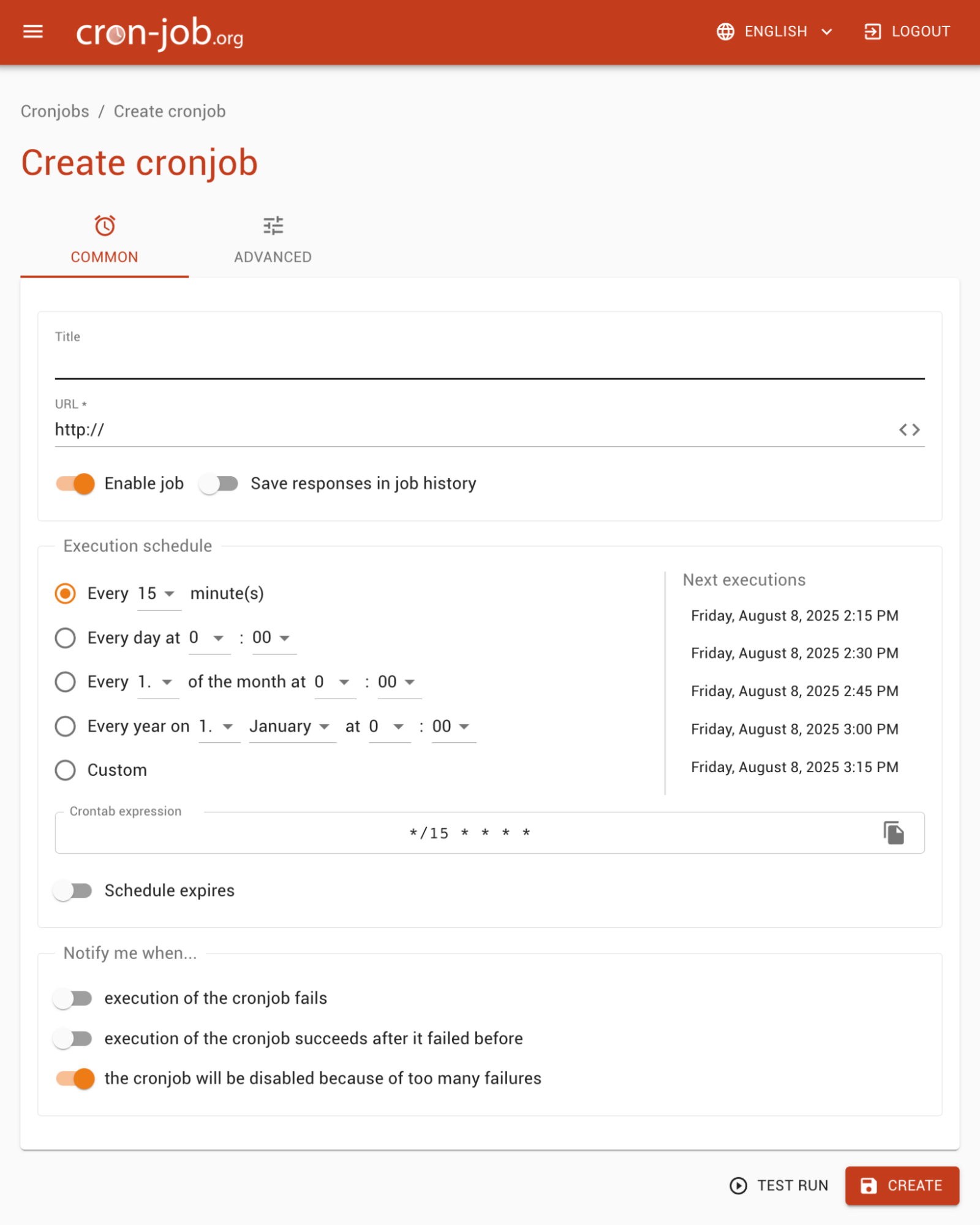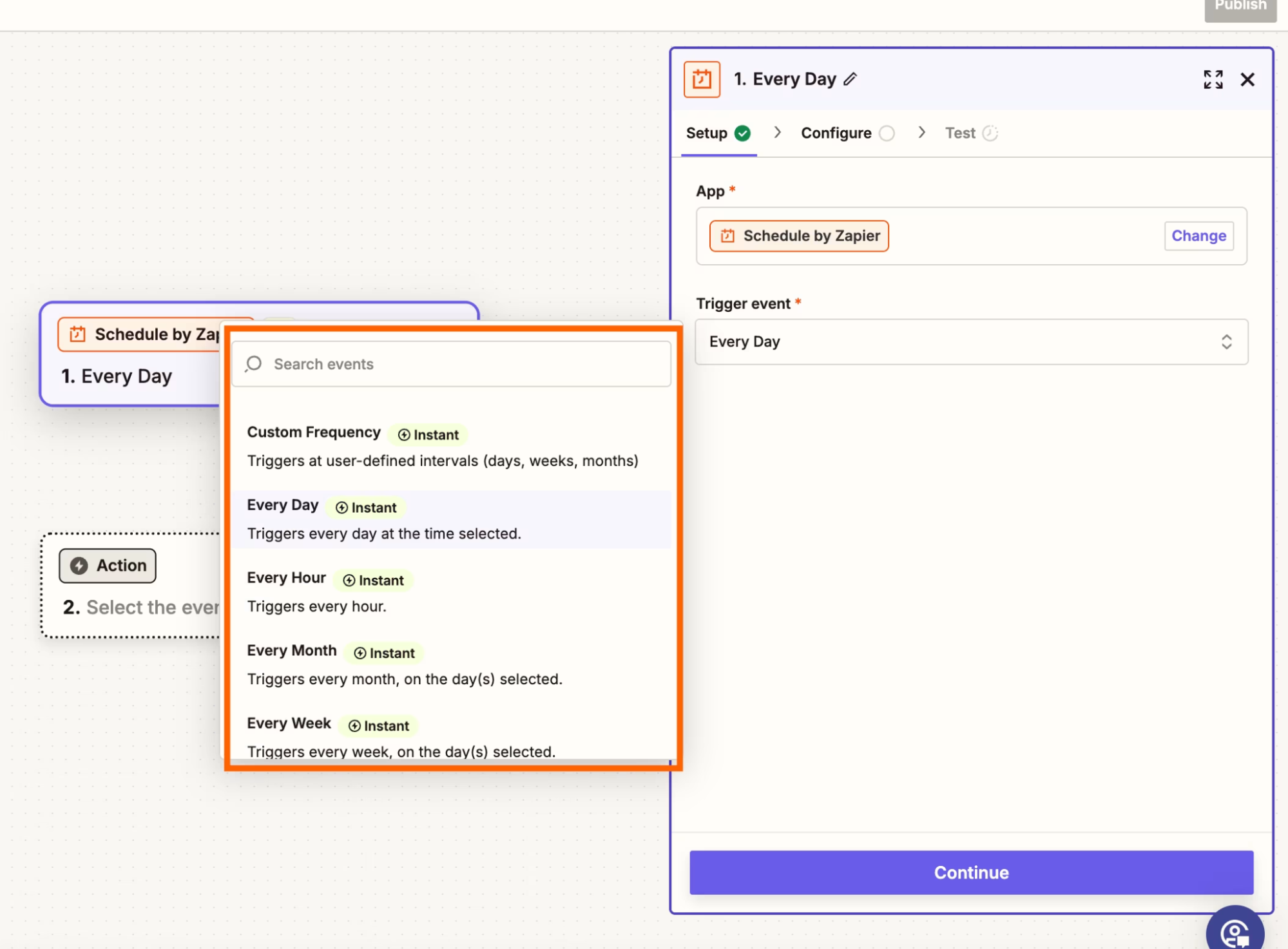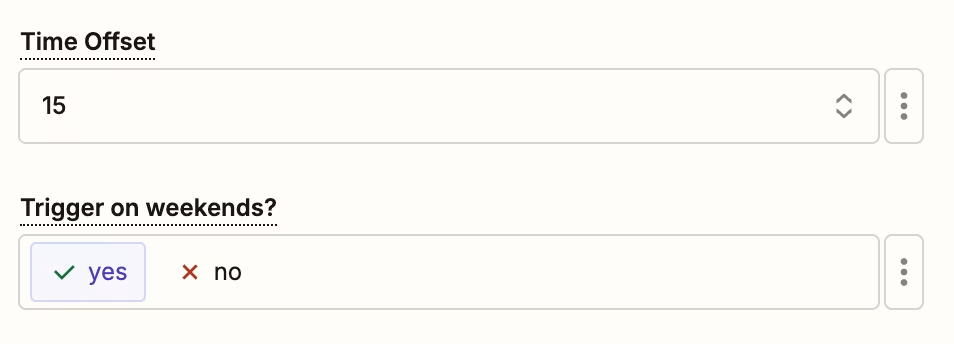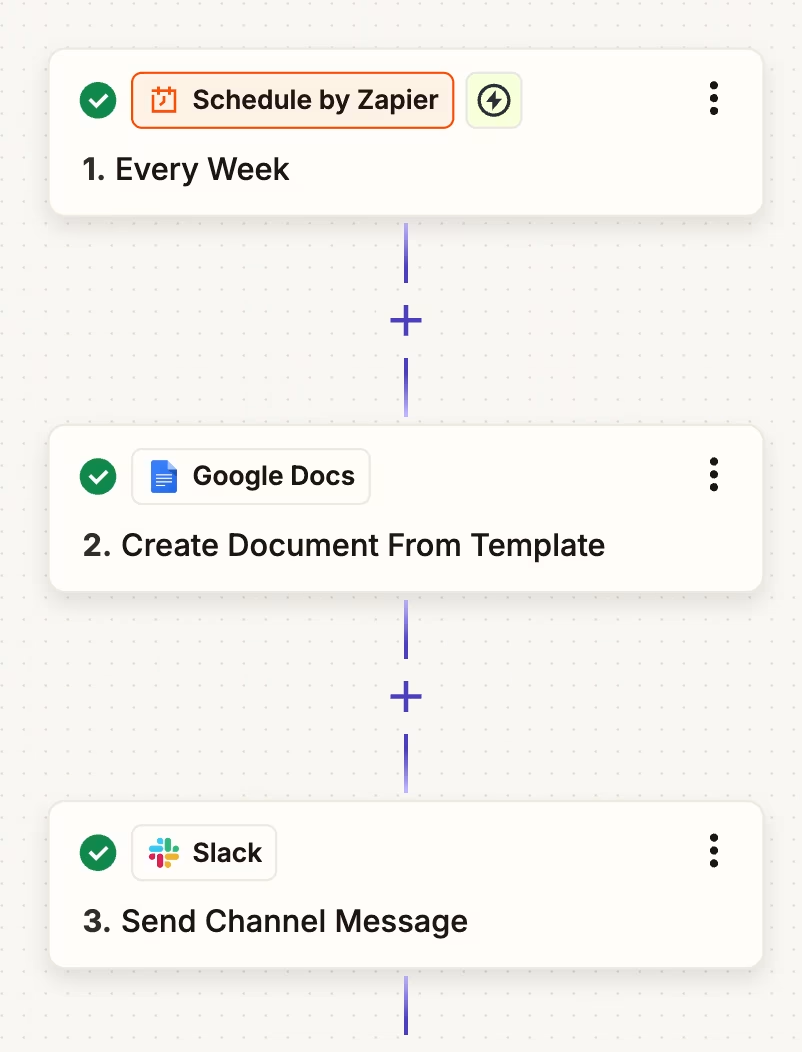A new Culver’s opened up in my neighborhood, and to say I’m stoked is putting it mildly. Although I live in Colorado, I’m a Midwestern girl at heart.
Each location offers a rotating flavor of the day, and I try to never miss the devil’s food cake. I could sign up for the monthly newsletter, pick up a paper calendar in-store, or check the website every day, but in addition to being inefficient, none of those offer a real-time alert to get my devil’s food cake.
I took matters into my own hands and created a cron job—a scheduled task—that checks the local chain’s store every day when they update for the day’s flavor and sends an immediate alert if it’s devil’s food.
Cron jobs usually require some technical expertise, but Zapier lets anyone set them up without any code. So let’s dive into what they are, how to set them up, and how they can help you indulge in your favorite rotating menu item.
Table of contents:
What is a cron job?
Cron jobs are essentially scheduled, recurring tasks. More specifically, they’re the commands that get the scheduled, recurring tasks to run.
You can use a cron job any time you have a repeated task that you want executed on a schedule. It’s perfect for improving business processes, like website management workflows, competitor intelligence, and automated content posting.
Here are some popular use cases for cron jobs:
-
Repetitive developer workflows. That includes automatic database/file/server backups (like your CMS), system maintenance tasks like updating software (such as WordPress plugins/core software/theme files), or running scripts at regular intervals, like a daily website health report.
-
Email notifications for important changes. If you need to know something immediately when it happens—like your favorite ice cream flavor being available or a competitor changing something on their website—you can combine web scraping with cron jobs.
-
Cleanup tasks. Things like clearing a browser cache and temporary files to make space on your computer would be a great use of cron jobs. No need to spend your time doing that manually.
-
Content posting. You can automate the process of posting content to social media profiles or sending articles to your CMS using a cron job.
-
Any other recurring task across your tech stack. When you use Zapier to set up a scheduled task, it can execute it across 8,000+ apps, so you can run almost any task on a schedule.
Here’s an uber-specific example, the one that got me interested in understanding cron jobs to begin with.
I use the free version of Supabase for some of my vibe coding projects. On the free plan, Supabase pauses the project after two weeks of inactivity, then deletes the data after 90 days if you don’t unpause or make changes. If I’m not regularly making changes to my database, that’s not ideal: I want my project to keep working regardless of whether I’m regularly updating it, and I don’t want it to delete the data I took the time to add to it if I’m not.
I get emails from Supabase warning me of pausing and potential data deletion, but they easily get lost in my inbox, so I’d rather set it and forget it. To do that, I set up a simple cron job that pings the database to show new activity and keep the project open—even if I’m not actively making new changes.
How to set up a cron job
There are a few ways to set up a cron job:
-
Local machine cron jobs: This setup is best for developers and technical users who need fine-grained control, don’t require external services, and only need to execute the task when their local machine is operating and logged in.
-
Cloud-server cron jobs: This setup is best for technical-adjacent users who are connecting with APIs, webhooks, and server-side scripts, but don’t want to use the command-line, and need something that works 24/7.
-
Schedule by Zapier: Zapier lets anyone of any technical skill level easily automate recurring tasks across apps—no dev environment or experience needed.
Here’s a quick look at how the code vs. no-code versions work, but keep reading for more details.
|
Cron jobs (code) |
Zapier (no‑code) |
|
|---|---|---|
|
Setup |
Terminal + cron syntax |
Visual interface |
|
Complexity |
Technical |
Beginner-friendly |
|
Trigger granularity |
Minute-level |
Hour/day/week/month + custom |
|
Condition logic |
Requires scripting |
Easy-to-use filters and paths |
|
Reliability |
Depends on the server or local machine uptime |
Managed 24/7 on Zapier’s enterprise cloud infrastructure |
|
Management |
Manual server monitoring |
Built-in task logs and visibility |
How to set up a cron job with code (terminal and cloud)
The traditional method for setting up a cron job involves adding code to your terminal (on a Mac) or using the Task Scheduler in Windows. Windows makes it a little easier, but on a Mac, you’d type the cron expression and the command into the terminal, and it would run on the schedule.
If you go this route, you can use crontab.guru, ChatGPT, or other online cron generators to help create cron expressions.
As an example, “every Tuesday at 6 a.m.” looks like this as a cron expression:
0 6 * * 2
Each asterisk represent some aspect of time:
If it’s just an asterisk, that means it’s not specifying that bit of information.

You can also use a site like cron-job.org. It works in fundamentally the same way as the local method but with a much simpler user interface (UI) for non-developers (plus, it runs in the cloud). It’s a more straightforward process to set the execution target—the URL that leads to an API endpoint, webhook, or server-side script—without having to write or configure code yourself, but you still need to have an understanding of the technical side of things to make it work.

How to set up a cron job without code (Zapier)
For anyone whose brain melts a little every time they hear the word “terminal,” you can use Schedule by Zapier to automate recurring tasks. It effectively does the same thing as a cron job, but you don’t need any code to do it—and you can trigger actions in all the apps you use at work.
There’s no cron syntax or terminal access: just pick your timing in Zapier’s friendly interface and then tell it what you want to do using natural language.
Let’s say that every Monday morning, you want to create a Google Doc from a template, then send that doc to a specific channel in Slack. You can get that done with Schedule by Zapier:
-
Create a new Zap, and set the trigger to Schedule by Zapier.

-
Choose a trigger frequency: Every Hour, Every Day, Every Week, Every Month, or Custom Frequency.

-
Next, and similar to a cron job, set your desired parameters in terms of the specific day, time of day, or interval. You can include or exclude weekends as a rule or use filters for more complex schedules, like “first Thursday of the month.”

-
From there, set up the rest of your automation with the visual interface. In this example, you’d have it create a Google Doc from a template, then send a Slack Channel message with the details in this example. But it works with 8,000+ apps.

Once the automation is turned on, you don’t have to worry about the details—tasks will run automatically in the cloud, even if you’re on a Caribbean beach sipping a virgin piña colada. (One can dream.)
Here are a few more templates you can build from, but you can schedule any task you want, including complex workflows, using Zapier.
Automate recurring tasks with Zapier
Cron jobs are a powerful tool made accessible with Schedule by Zapier. Think of Schedule by Zapier as a timer for your Zaps that handles all your repetitive tasks on a recurring basis. From sending weekly check-in emails to preparing meeting documents, you can automate those tasks right on time, every time a specific day (or time) rolls around.
For more inspiration, check out how companies like Ipsy and Great Day Improvements are using Schedule by Zapier in their automations.
Related reading: